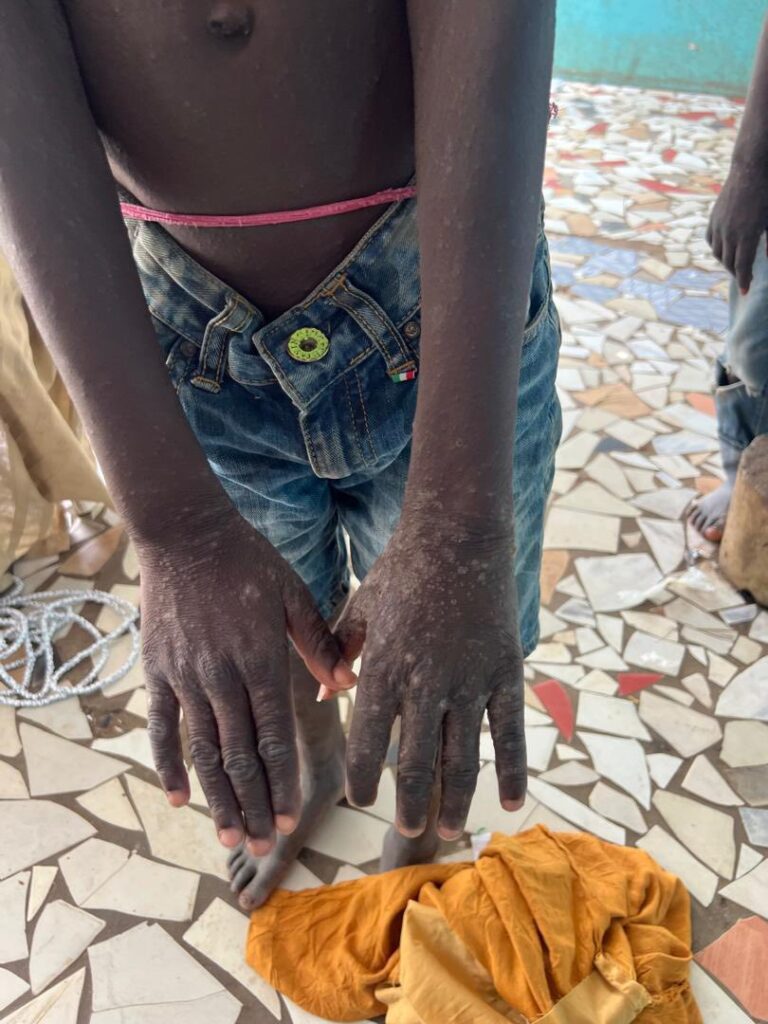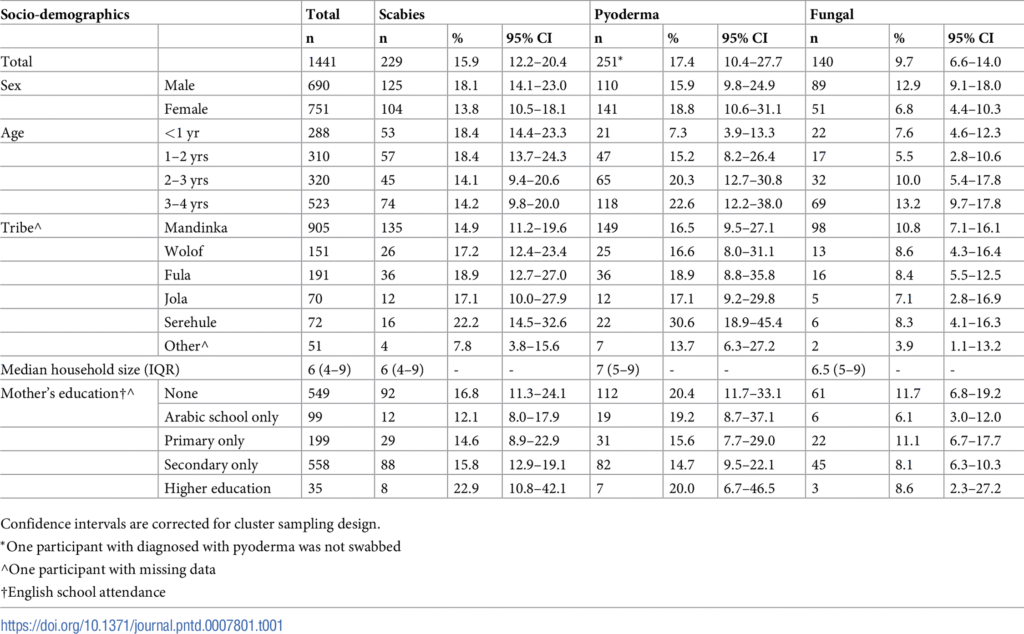By Momodou Janneh
On May 26, 2025, The Gambia’s Ministry of Health issued a public health alert on the scabies outbreak at Daara Madina Suwaneh, an Islamic boarding school at Brufut Heights, Kombo South District of the West Coast Region.
Scabies is a contagious skin condition caused by tiny mites that burrow into the skin, causing intense itching and a rash. It spreads rapidly in overcrowded and unhygienic environments.
According to the Ministry of Health, 101 children were examined, out of which, 57 cases of scabies were confirmed.
“These children are facing serious health risks, worsened by a lack of adequate medical care at the time of the investigations,” the Ministry said, noting that it was working hard to provide immediate treatment, improve hygiene conditions, and prevent further spread of the disease.
The health ministry also urged the public, especially those managing residential institutions, to ensure proper hygiene and regular medical checkups to protect children’s health.

Worldwide prevalence
Scabies spread most often through direct contact with an infected person. These little bugs make tunnels under the affected person’s skin to live, feed, and lay eggs. Scabies are a worldwide problem, affecting more than 400 million people each year, according to Cleveland Clinic.
In 2023, the WHO said at least 200 million people worldwide suffer from scabies at any one time and an estimated 5–50% of children in resource-poor areas are affected by scabies.
However, scabies can affect people of all ages, races, or economic status in any country anywhere in the world and in fact, it is found in every country in the world, but it is most common in hot, tropical countries and in areas of high population density.
What are the symptoms of scabies?
Symptoms of scabies usually begin 4–6 weeks after infestation. Sometimes there are visible signs before symptoms begin.
Symptoms of scabies include:
- severe itch, often worse at night; and could make it hard to sleep
- itchy lines (linear burrows) and bumps (papules) on the fingers, wrists, arms, legs and belt area;
- enflamed bumps on male genitalia and female breasts; and
- larger rash in infants and small children, including on the palms, soles of the feet, ankles and scalp.
Most individuals are infected with 10–15 mites.
What are the types of scabies?
There are different forms in addition to the classic form. The other types of scabies include:
- Crusted (Norwegian): This type often happens in people with weak immune systems. It tends to form crusted areas covering a large area of skin. If you have crusted scabies, you might have millions of mites instead of 10 to 15 mites common with classic or typical scabies.
- Nodular: This type is more common among children and affects their genitals, groin, or armpits. The raised bumps can still be there long after the mites are gone.
What causes scabies and how does it spread?
Scabies is a mite infestation. These tiny mites burrow under your skin to live, eat, poop and lays eggs. Your skin reacts to this by swelling and itching, much like your skin reacts to allergy.
Scabies mites spread from person to person. Direct contact with a person’s skin is the easiest way to spread scabies. Less commonly, you can also get through sharing bedding, clothes, or towels with someone who has the disease.
What complications scabies causes?
According Cleveland Clinic, scabies can cause serious complications, like the following conditions:
- Painful skin sores
- Septicemia (infection in your blood).
- Heart disease
- Kidney disease
Evidence of acute renal damage can be found in up to 10% of children with scabies infestation in resource-poor settings and, in many, this persists for years following infection contributing to permanent kidney damage, the WHO said.

Where do scabies mites live in the body?
Scabies mites live in the following spots in the body:
- Folds in between the fingers and toes
- Folds in thigh and genitals
- Bends at wrist and knees
- The area around the waist
- Under fingernails
- Under rings, watch bands and bracelets
- The area around the nipples
How is scabies treated?
Scabies can be treated with topical creams or oral medication in more severe cases. Itchiness often gets worse for 1–2 weeks after treatment starts. Topical treatments that are applied to the whole body include:
- 5% permethrin cream
- 0.5% malathion in aqueous base
- 10–25% benzyl benzoate emulsion
- 5–10% sulphur ointment.
Ivermectin taken orally is also highly effective, but it should not be taken by pregnant women or children who weigh less than 15 kg.
Treatments do not kill the parasite’s eggs, and treatment should be repeated to kill newly hatched mites. The WHO recommends that all people in the household should be treated, even if they do not have symptoms in order to reduce the spread.
Other treatments may be needed to treat the complications of scabies. Antiseptics or antibiotics are used to treat bacterial skin infections or impetigo. Patients with crusted scabies are highly infectious and a source of reinfection to the rest of the community. Patients with crusted scabies need intense treatment with both topical and oral medications.
How to prevent scabies?
Things you can do to prevent the spread of scabies and lower the risks:
- avoid skin-to-skin contact with an infested person, especially if they have an itchy rash;
- treat all members of the household if someone has scabies to prevent the mites from spreading to others;
- wash and dry bedding and clothing that has been in contact with the infested person, using hot water and drying in direct sunlight, a hot dryer cycle or dry cleaning;
- seal items that can’t be washed in a plastic bag for a week to help eliminate the mites; and
- clean and vacuum or sweep rooms after an infested person has been treated, especially for people with crusted scabies.

Prevalence of scabies in The Gambia
A study conducted in 2018 in Sukuta, Kombo North District of the West Coast Region, and published on PLOS.org, a neglected tropical diseases journal, on the high burden and seasonal variation of paediatric scabies and pyoderma prevalence in The Gambia – found a high prevalence of scabies.
A total of 1,441 participants from 9 clusters were examined between May and September 2018. The study found a high burden of skin infections among Gambian children.
The scabies prevalence was observed to be 15.9% and is consistent with other studies from sub-Saharan African countries like Nigeria, Cameroon and Ethiopia].


